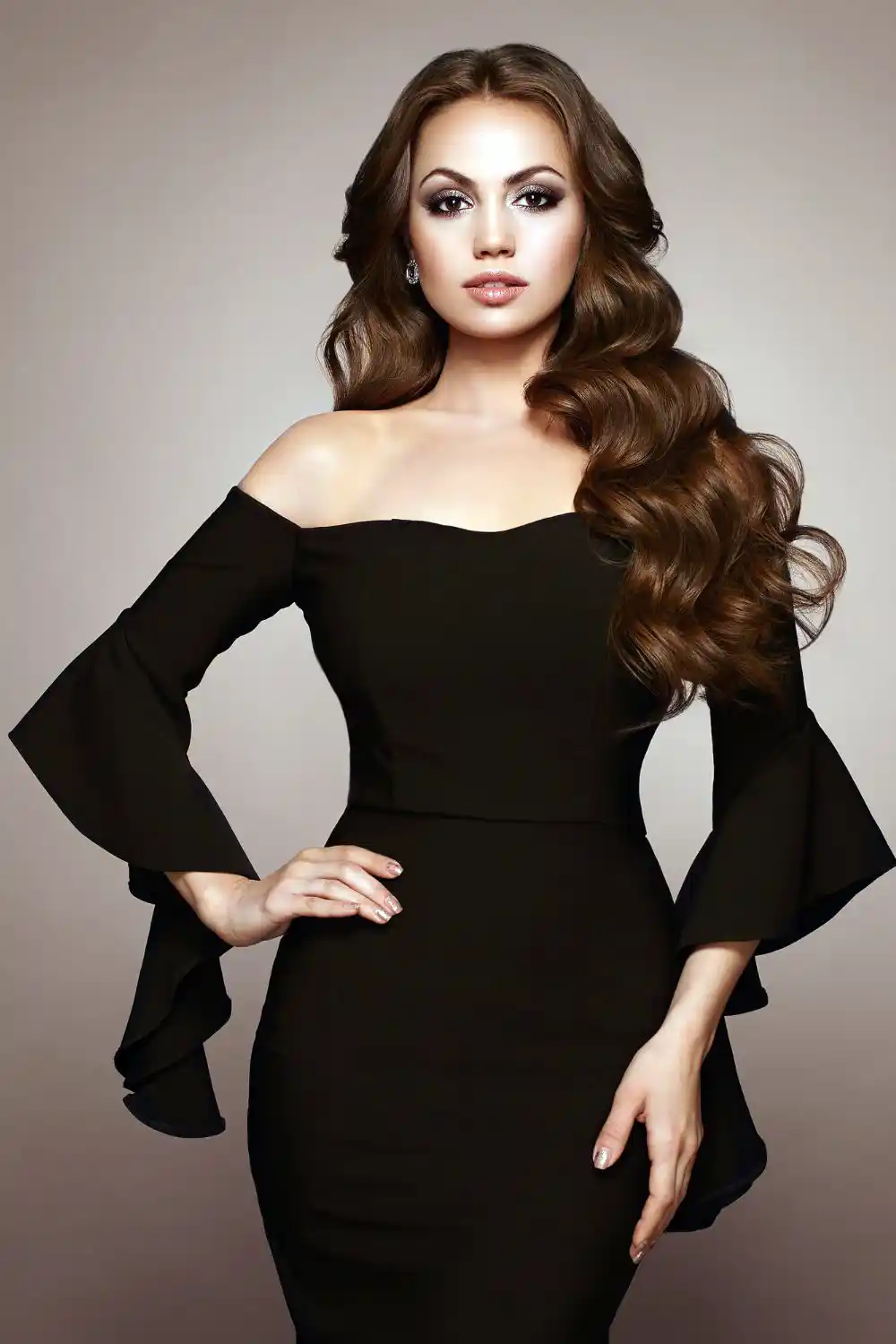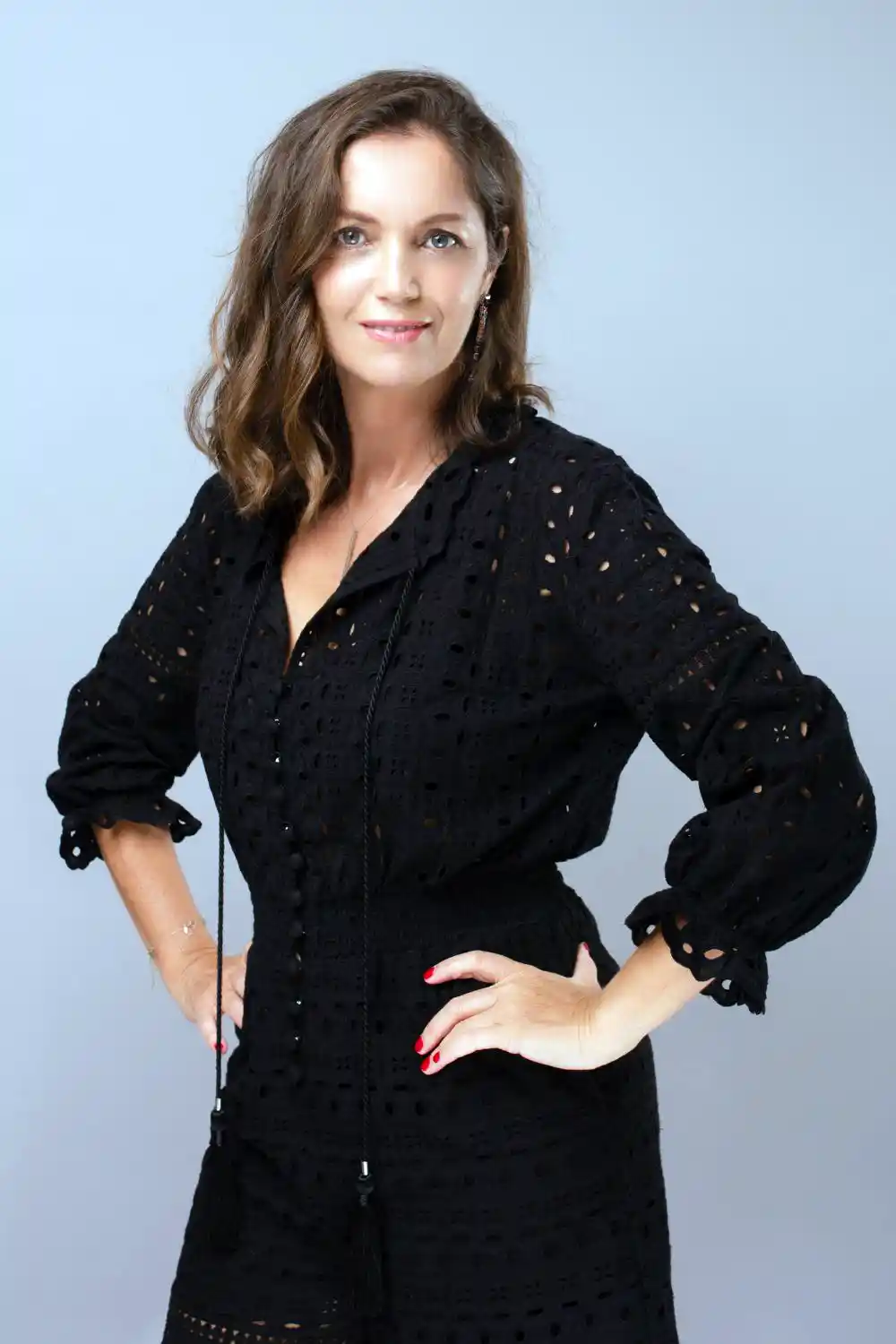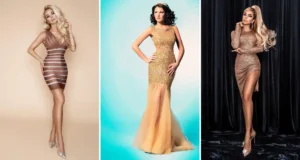In recent years, female journalists across the globe have embraced wearing black clothing while presenting the news. This subtle shift in wardrobe has morphed into a symbolic silent protest and solidarity movement. The colour black holds deep meaning for speaking out against sexism and racism within the media industry.
Many prominent female reporters and anchors have noticeably incorporated dark, neutral tones into their on-air wardrobes. By donning black dresses, pantsuits, blazers, and tops, they’re making a subtle yet powerful statement about inequality in their profession.
This silent sartorial protest conveys a mood of seriousness and solidarity against the discrimination faced by women, especially women of color, in newsrooms.
Historical Context of Symbolic Dress Codes
Throughout history, clothing color has been used to convey powerful messages. Suffragettes adopted white attire in the early 20th century to promote women’s right to vote. Their white dresses and sashes became iconic symbols of their struggle.
More recently, celebrities wore black to the 2018 Golden Globes to show support for the Time’s Up initiative against sexual harassment.
Similarly, female journalists choosing dark outfits makes a bold statement. Their sartorial choices highlight experiences of inequality and discrimination women of color face in newsrooms.
By embracing black on-air, female reporters link their modern-day protest to historic movements for women’s rights and social justice. Their wardrobe visually connects their advocacy to that of pioneering activists and feminists.

Current Trends and Influences
Recent Surge in Black Attire
In the past few years, prominent female anchors and reporters have noticeably opted for dark, neutral tones while on air.
High-profile figures such as MSNBC’s Joy Reid and CNN’s Brooke Baldwin frequently wear black dresses, blazers, and pantsuits during broadcasts. MSNBC’s Nicolle Wallace also commonly anchors her show in black attire.
This mirrors a wider fashion trend of women embracing this empowering palette in business and formal settings. However, the surge in black clothing amongst female journalists sends a more specific message about their profession.
Impact of Social Movements
The shift also connects to recent anti-racism protests and demands for diversity.
Female journalists likely feel compelled to demonstrate their solidarity with marginalized groups visually and the causes they cover. Their on-air style subtly acknowledges broader social change movements regarding racial justice and gender equity.
Media Industry’s Role
The trend also stems from inequality within the journalism field itself. Women currently represent less than 40% of full-time staff and only account for about a quarter of leadership roles in print, broadcast, and digital news.
Female journalists of color, in particular, face stark underrepresentation and marginalization. Their black attire silently protests these engrained disparities while presenting the news.
Empowering Female Voices
Breaking Stereotypes
Opting for dark, neutral tones allows women to place focus on their skills rather than appearance. It subverts traditional expectations that female presenters must wear brightly colored, ostentatious outfits.
Darker clothing conveys authority and professionalism, allowing women to highlight their reporting capabilities over their looks. This helps dismantle outdated stereotypes of female journalists.
Embracing Solidarity
Collectively embracing a “dress code” promotes solidarity between female journalists across outlets, roles, and demographics.
Visually demonstrating their shared experiences fosters community and empowers women to enact change. The simple act of two anchorwomen both wearing black on separate networks symbolically links them in sisterhood.
The Sisterhood in Journalism
This silent protest highlights the growing sisterhood among women in the journalism industry. Female reporters increasingly advocate for each other and provide support to navigate systemic discrimination.
Experienced journalists actively mentor younger women entering the field. Black clothing visually conveys this expanding culture of mentorship and unity.

Challenges Faced by Black Female Journalists
Racism, Sexism, and Classism in the Newsroom
Black women in journalism must contend with layered discrimination based on race, gender, and socioeconomic background. They routinely encounter racist attitudes, marginalization, and harassment from colleagues. Systemic oppression also manifests through hostile work environments and a lack of career advancement opportunities.
Oftentimes, black female journalists feel pressured to change their hair, speech patterns, or clothing to assimilate into white-dominated newsrooms.
They frequently have their authority undermined by racially tinged comments. These ingrained biases severely impact women of color in the journalism workforce.
Being the Only Black Female Journalist in the Room
Due to severe underrepresentation, black women often find themselves as the only person of color in writers’ rooms or editorial meetings.
This isolating experience frequently results in minority perspectives being overlooked or minimized. Black female journalists report feeling immense pressure to be spokespeople for their entire race.
Experience of Female Journalists of Color on Twitter
Black female reporters face constant online harassment, including racist sexist threats undermining their authority. A Pew Research study found that 40% of women journalists experienced online abuse.
For women of color, social media often provides another space where their voices are attacked rather than elevated.
Black Women Journalists to Follow
List of Select Women Journalists Who Have Made Their Mark on the Media Landscape
- Joy Reid – MSNBC anchor, political analyst, and author of books like “Fracture” and “The Man Who Sold America.”
- Gayle King – “CBS Morning News” co-host, Oprah magazine editor and featured columnist
- Tamron Hall – MSNBC host, NBC and ABC news correspondent and anchor
- Audie Cornish – NPR co-host of “All Things Considered” and “Weekend Edition” and former weekend anchor
- Yamiche Alcindor – PBS White House correspondent and NBC political contributor
- Michele Norris – Founding Director of The Race Card Project, former NPR host
- Gwen Ifill – Award-winning PBS newscaster and author of “The Breakthrough”
- Barbara Walters – Broadcast journalism pioneer, trailblazer, and author of memoirs like “Auditions.”
- Christiane Amanpour – CNN chief international anchor, host of Amanpour & Company on PBS
- Ann Curry – Veteran NBC on-air journalist, news anchor, and photojournalist globally
- Kara Swisher – New York Times contributing writer, technology journalist, and co-host of podcast “Sway”
Emotional Toll of Being a Black Journalist
Experiences of Black Journalists
Racism and discrimination inflict emotional trauma on black journalists, compounding the stresses of their high-pressure jobs.
Former news anchor Charlayne Hunter-Gault has publicly detailed the discrimination and mental duress she endured as one of the first black female correspondents at PBS and CNN.
Other black journalists similarly describe feelings of physical and mental exhaustion from relentlessly encountering racist attitudes from managers, peers, and news consumers throughout their careers. The emotional toll of navigating systemic racism manifests itself through burnout, depression, and health issues.
Navigating a White Newsroom as a Black Female Reporter
In interviews, black women journalists candidly discuss the mental anguish of working in white-dominated news organizations.
They emphasize the psychological impacts of constantly being expected to represent diversity and shoulder invisible burdens. Veteran journalists like Gayle King provide insight into learning to thrive professionally despite hostility and marginalization.
Debunking Myths
BBC Anchors and the Black Attire
There is a common misconception that the trend originated with BBC anchors being required to wear black clothing.
However, their on-air dark attire emerged organically as a grassroots solidarity movement. While BBC presenters like Louise Minchin embraced the trend, network management did not dictate the wardrobe shift.
When the Transformation Began
Some reports inaccurately credit MSNBC’s Greta Van Susteren with pioneering the dark, neutral palette amongst female anchors when she joined the network in 2017.
However, women of color in journalism, such as former CNN anchor Bernard Shaw, had already begun shifting their wardrobe by the early 2010s. The collective movement simply gained traction through high-profile adopters.
Fact-Checking Newsreaders’ Attire Changes
While subtle, the transition towards black outfits marked a purposeful statement. Unlike outdated regulations focused on hemlines or necklines, the modern trend was journalist-driven. It remains a powerful symbol of solidarity and protest against entrenched discrimination.
Voices from Female Journalists
Personal Testimonies
In interviews, detailed memoirs, and reporting, women journalists emphasize how gender and racial discrimination have impacted their lengthy careers.
They share poignant anecdotes of marginalization and hostility experienced in their roles. Many describe feeling immense pressure early in their careers to conform to white, male-dominated cultural norms in newsrooms.
Challenges and Triumphs
Black female reporters courageously lead frank discussions on the lack of opportunity and burnout faced by minorities in journalism.
Journalist Gail Collins recently spoke candidly about the sexism she navigated as one of the first female reporters at major newspapers like the Chicago Tribune and New York Daily News.
Other women offer insight into overcoming barriers and achieving hard-fought victories throughout their professional journeys.
Uniting for Change
Female journalists hope to enact cultural change in the industry by speaking out. They aim to create safer, more inclusive environments, allowing diverse voices to participate fully.
Candid storytelling from icons like Barbara Walters helps galvanize collective efforts toward equality and inclusion. Younger journalists credit trailblazers with empowering them to advocate for themselves.

Summary
Opting to wear black clothing on air allows female journalists to make a subtle yet powerful statement. Their sartorial choice conveys solidarity, brings awareness to discrimination, and signals a commitment to equality. This journalistic “dress code” enables women to protest bias while informing the public silently.
This silent protest marks an important cultural shift. However, achieving true diversity and gender equity across news media requires concrete action. Institutions must actively invest in inclusion, safety, and advancement opportunities for marginalized groups.
By harnessing their collective voice, female journalists can catalyze this needed transformation. But lasting progress depends on media organizations confronting systemic inequities, not just the activism of women within them. Allies must join the efforts of brave, pioneering female journalists to enact solutions and carry on their legacy.
FAQ
What is the dress code for journalists?
Journalists often opt for business casual attire when covering events or conducting interviews. This typically means avoiding overly casual clothing such as leggings or T-shirts. Instead, they may choose to wear button-up blouses, nice pants, or skirts. The specific dress code requirements may also depend on the reporting type. For example, reporters covering government events or banks may be expected to dress more formally, while entertainment and sports reporters may have more flexibility in their attire.
Who was the first black woman journalist?
The first black woman journalist was Alice Allison Dunnigan. She was a pioneering African-American journalist and author. Dunnigan was born on April 27, 1906, in Russellville, Kentucky, and she passed away on May 6, 1983. She made history as the first black female correspondent to receive White House credentials and became a trailblazer in the field of journalism.
Is journalism a white collar job?
Yes, journalism is generally considered a white-collar job. White-collar work typically involves professional, managerial, or administrative tasks, often performed in an office or professional setting. Journalists typically engage in research, reporting, writing, and editing, which aligns with the characteristics of white-collar work. While some aspects of journalism may involve physical labor or fieldwork, the overall nature of the profession is predominantly white-collar.
Who is the father of black journalism?
Robert Sengstacke Abbott is often called the “Father of Black Journalism.” He was a prominent publisher and founder of the Chicago Defender, a historic African-American newspaper. Abbott played a significant role in shedding light on social injustices during his lifetime and contributed to advancing black journalism.
Who started yellow journalism?
Yellow journalism was popularized by newspaper owners William Randolph Hearst and Joseph Pulitzer in the late 19th century. They used sensationalism, exaggeration, and provocative headlines to attract readers and increase circulation. While Hearst and Pulitzer played significant roles in promoting and popularizing yellow journalism, it is important to note that the style and practices existed before their involvement.



